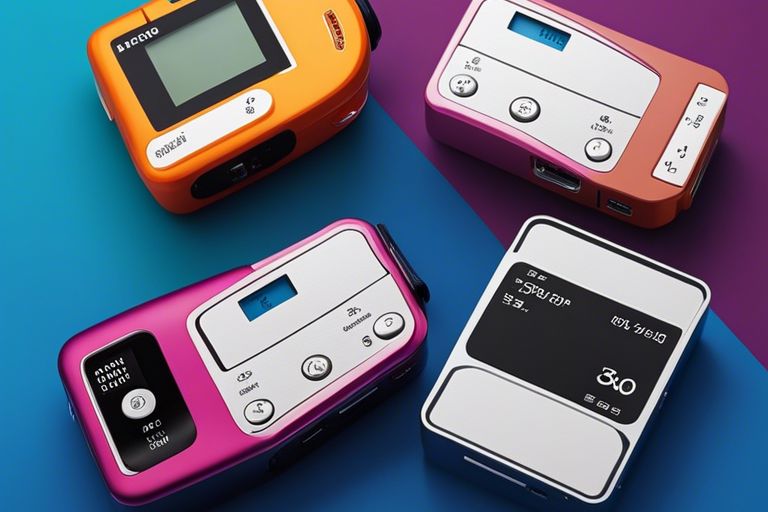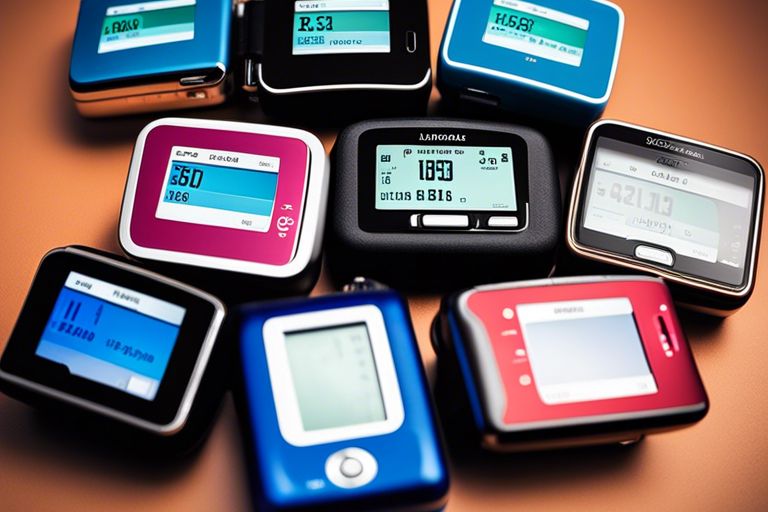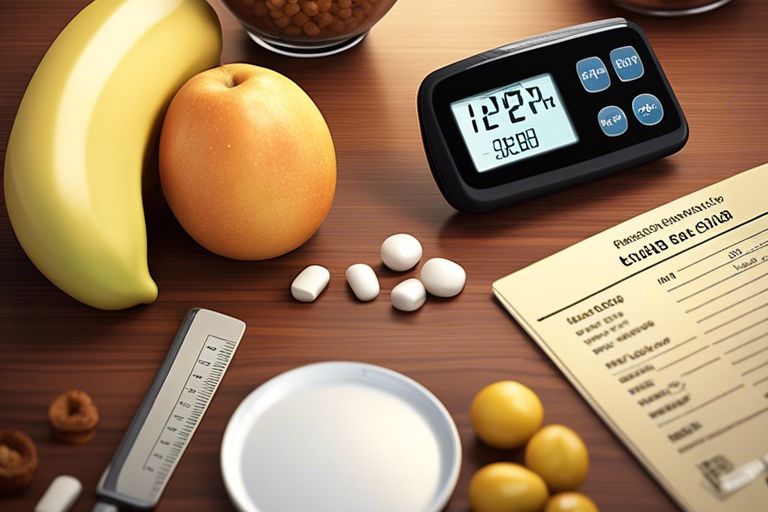Managing Type 1 Diabetes requires careful attention to diet, especially when it comes to snacking. Choosing the right snacks can help maintain blood sugar levels and overall health. In this blog post, we will explore a range of delicious and nutritious snack ideas that have been approved by dietitians for individuals with Type 1 Diabetes. These snacks are not only tasty but also provide the right balance of carbohydrates, protein, and fats to keep blood sugar levels stable throughout the day. Whether you need a quick bite between meals or a midnight snack, these dietitian-approved ideas will keep you satisfied and healthy.
Key Takeaways:
- Importance of snacks: Snacking can help manage blood sugar levels, prevent hypoglycaemia, and provide sustained energy throughout the day for individuals with Type 1 Diabetes.
- Focus on balance: Opt for snacks that include a mix of carbohydrates, proteins, and healthy fats to maintain stable blood glucose levels.
- Healthy snack options: Choose nutrient-dense snacks like Greek yogurt with berries, vegetable sticks with hummus, or nuts and seeds for a satisfying and diabetes-friendly treat.
- Avoid sugary snacks: Steer clear of processed snacks high in sugar and refined carbs that can cause blood sugar spikes and lead to poor diabetes management.
- Consult a dietitian: It’s crucial to work with a dietitian to create a personalised snack plan tailored to individual dietary needs and diabetes management goals.
Understanding Carbohydrates and Blood Sugar Control
The Role of Carbohydrates in Type 1 Diabetes
Carbohydrates play a crucial role in managing blood sugar levels for individuals with Type 1 Diabetes. When consumed, carbohydrates are broken down into glucose, which raises blood sugar levels. It is important for individuals with Type 1 Diabetes to monitor and carefully manage their carbohydrate intake to maintain stable blood sugar levels throughout the day.
Glycemic Index and Glycemic Load
The Glycemic Index (GI) and Glycemic Load (GL) are tools that help individuals with Type 1 Diabetes understand how different carbohydrate-containing foods can impact blood sugar levels. Foods with a high GI can cause a rapid increase in blood sugar levels, while foods with a low GI are digested more slowly, resulting in a gradual rise in blood sugar. Monitoring the GI and GL of foods can help individuals make informed choices to better control their blood sugar levels.
When planning snacks for individuals with Type 1 Diabetes, opting for foods with a lower GI can help in maintaining stable blood sugar levels throughout the day. Foods such as whole grains, legumes, and non-starchy vegetables tend to have a lower GI and are good options to include in a balanced diet for blood sugar control.
Principles of a Diabetes-Friendly Snack
Nutritional Balance and Portion Sizes
When planning snacks for individuals with Type 1 Diabetes, it is crucial to focus on maintaining a balance of nutrients such as carbohydrates, protein, and healthy fats. Opt for whole foods like fruits, vegetables, nuts, seeds, and lean proteins to provide sustained energy and prevent sudden spikes in blood sugar levels. In terms of portion sizes, it is important to be mindful of carbohydrate intake, as they have the most significant impact on blood glucose levels.
Timing and Frequency of Snacks
Timing and frequency of snacks play a vital role in managing blood sugar levels for those with Type 1 Diabetes. It is recommended to have planned snacks in between main meals to prevent hypoglycaemia and maintain steady blood glucose levels throughout the day. This helps in avoiding extreme highs and lows, ensuring a more stable and controlled blood sugar profile.
Dietitian-Approved Snack Ideas
Low-Glycemic Snack Options
For individuals with Type 1 diabetes, choosing low-glycemic snacks is necessary to managing blood sugar levels. Opt for snacks that are rich in fibre, protein, and healthy fats to prevent spikes in blood glucose. Some great options include raw vegetables with hummus, Greek yoghurt with a handful of nuts, or a small apple with almond butter.
Creative Combos for Sustained Energy
When considering maintaining steady energy levels throughout the day, combining carbohydrates with protein and healthy fats can be beneficial. Consider snacks like whole grain crackers with avocado and tuna, a slice of wholemeal toast with mashed banana and almond butter, or a small portion of brown rice with grilled chicken. These creative combinations not only provide sustained energy but also help in keeping blood sugar levels stable.
Additional Tips for Snacking with Type 1 Diabetes
Label Reading and Nutrient Awareness
When managing Type 1 Diabetes, it is crucial to pay close attention to food labels and be aware of the nutrient content in snacks. Focus on carbohydrates, as they have the most significant impact on blood sugar levels. Look out for added sugars and opt for snacks high in fibre and protein to help keep you feeling full and stabilise blood glucose levels. Recall, it’s not just about the calories, but the quality of nutrients in your snacks.
Strategies for Eating Out and On-the-Go
When eating out or on-the-go with Type 1 Diabetes, planning ahead is key. Choose restaurants that offer healthier options such as salads, grilled proteins, and vegetables. Request dressings and sauces on the side to control portions of added sugars and fats. If you’re unsure about the nutritional content of a dish, don’t hesitate to ask the server for more information. Always carry a snack with you, such as nuts or fruit, to avoid unhealthy impulse choices when hunger strikes.
- Aim for snacks high in fibre and protein to help stabilise blood glucose levels.
- Choose restaurants that offer healthier options like salads and grilled proteins.
- Plan ahead and have a healthy snack on hand to avoid unhealthy choices when out and about.
- Remember to always keep track of your insulin levels during these times.
Conclusion: Dietitian-Approved Snack Ideas for Type 1 Diabetes
In the aggregate, carefully selecting snacks that are low in added sugars, high in fibre and protein, and rich in nutrients can help individuals with Type 1 Diabetes manage their blood sugar levels effectively. Dietitian-approved snack ideas such as Greek yoghurt with berries, vegetable sticks with hummus, mixed nuts and seeds, or rice cakes with avocado provide a balance of carbohydrates, protein, and fats to prevent spikes in blood sugar. By making wise snack choices, individuals with Type 1 Diabetes can enjoy delicious, satisfying snacks while supporting their overall health and wellbeing.
FAQ
Q: What are some dietitian-approved snack ideas for Type 1 Diabetes?
A: Dietitian-approved snack ideas for Type 1 Diabetes include nuts and seeds, Greek yogurt with berries, veggie sticks with hummus, whole grain crackers with cheese, and apple slices with peanut butter.
Q: How can snacks help individuals with Type 1 Diabetes manage their blood sugar levels?
A: Snacks can help individuals with Type 1 Diabetes manage their blood sugar levels by providing a balanced combination of carbohydrates, protein, and healthy fats to prevent spikes and dips in blood sugar.
Q: Are there any recommended portion sizes for snacks for individuals with Type 1 Diabetes?
A: Recommended portion sizes for snacks for individuals with Type 1 Diabetes can vary based on factors such as activity level, medication, and individual tolerance levels. It is advisable to work with a dietitian to determine appropriate portion sizes.
Q: What are some snacks to avoid for individuals with Type 1 Diabetes?
A: Snacks to avoid for individuals with Type 1 Diabetes include sugary drinks, candies, pastries, and other high-sugar, high-carb options that can cause rapid spikes in blood sugar levels.
Q: How can individuals with Type 1 Diabetes ensure they are making healthy snack choices?
A: Individuals with Type 1 Diabetes can ensure they are making healthy snack choices by reading food labels, focusing on whole foods, incorporating a variety of food groups, and monitoring their blood sugar levels to see how different snacks affect them.




